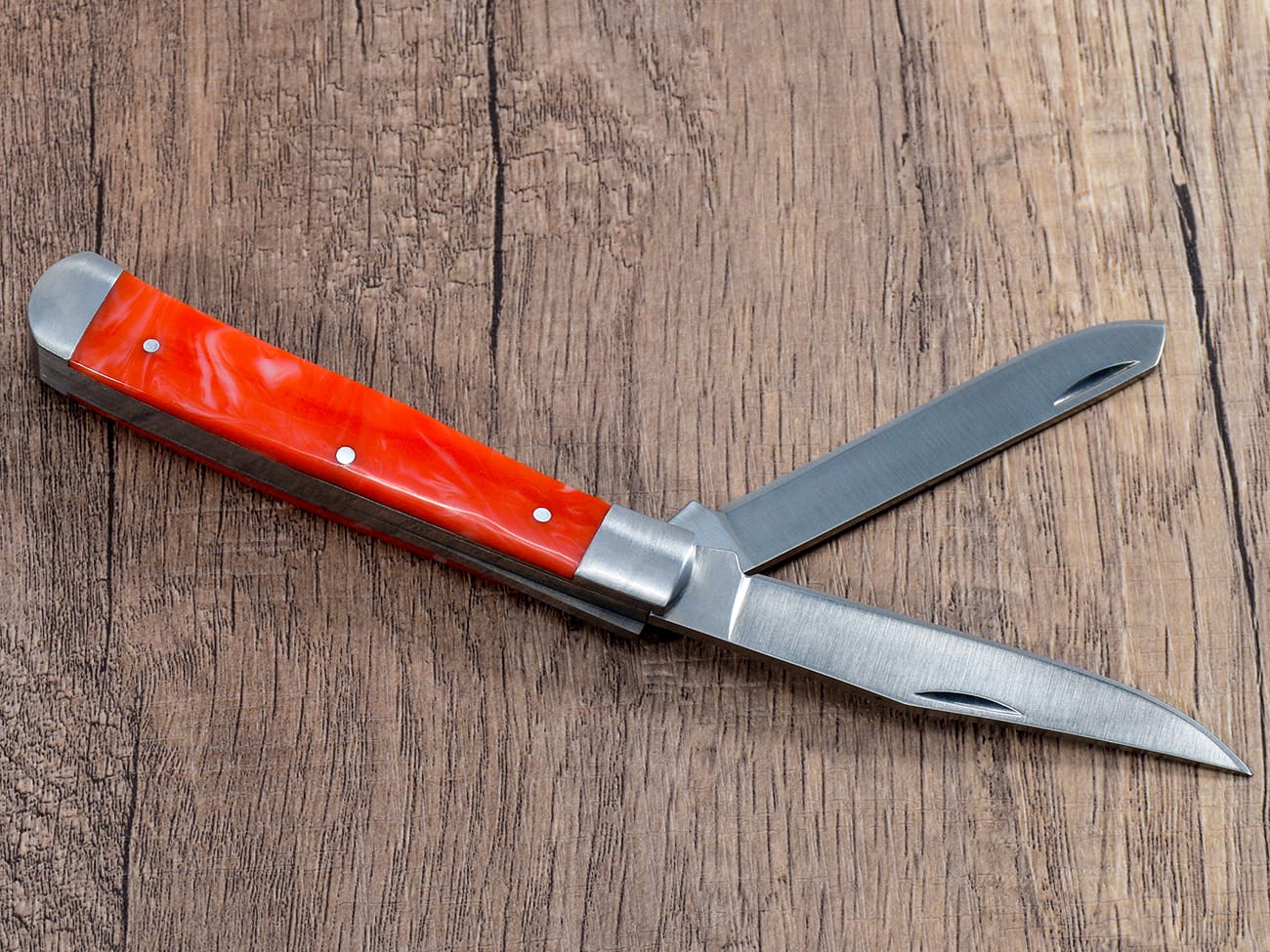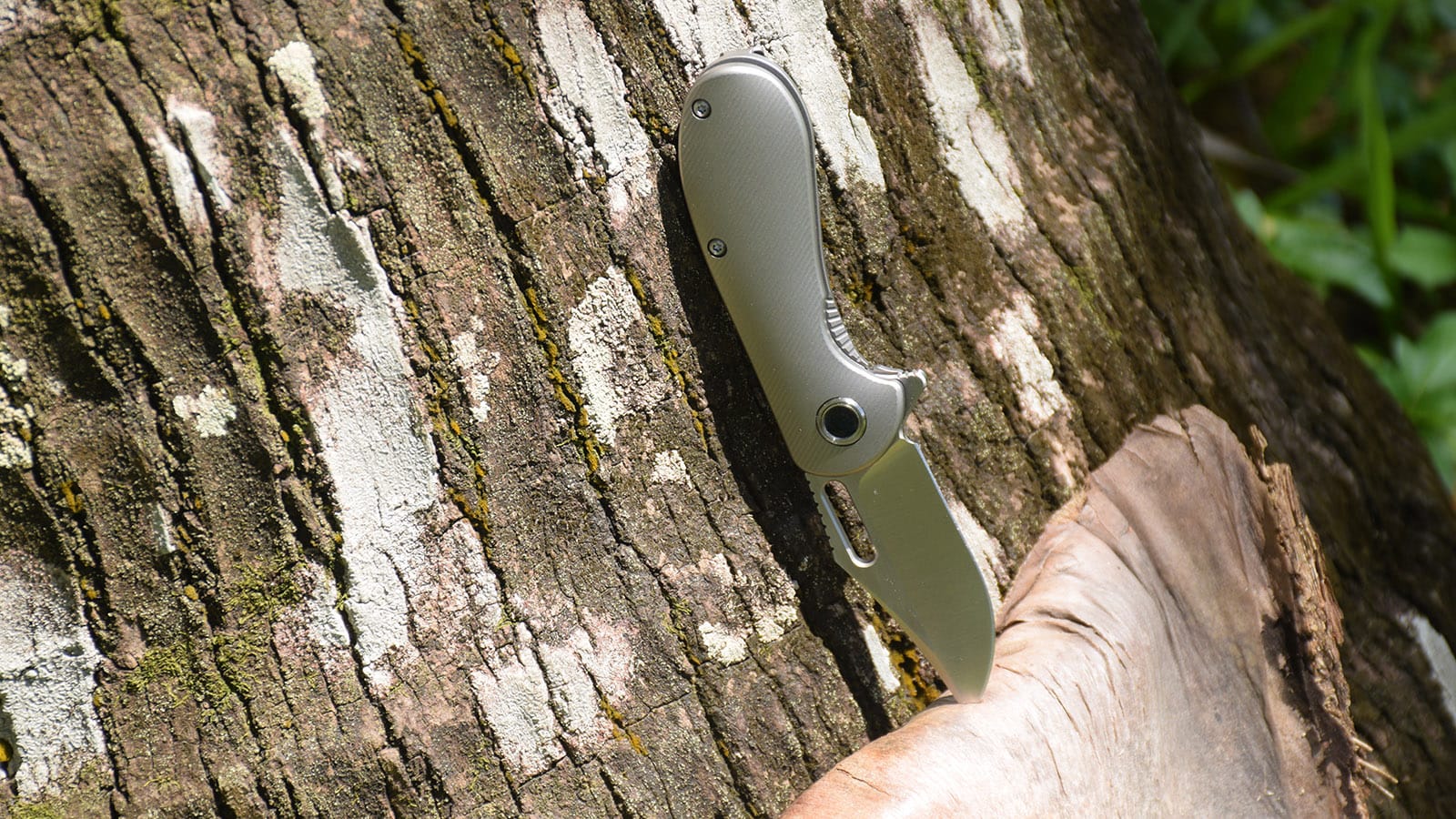Hyvin suunniteltu veitsen kahva voi tehdä kaiken eron työkalun, jota on ilo käyttää, ja epämukavuutta tai jopa vammoja aiheuttavan työkalun välillä. Olitpa ammattikokki, ulkoilun harrastaja tai vain hyvää arvostava veitsiErgonomisen kädensijan suunnittelun periaatteiden ymmärtäminen on ratkaisevan tärkeää. Tämä kattava opas opastaa sinua luomaan mukavia, toimivia veitsen kahvoja, jotka parantavat suorituskykyä ja vähentävät väsymystä.
Miksi veitsen kahvan muotoilu on niin tärkeä?
Ennen kuin sukeltaamme kahvan suunnittelun yksityiskohtiin, pohditaan, miksi sillä on merkitystä:
- Mukavuus: Hyvin suunniteltu kahva vähentää käsien väsymistä pitkäaikaisen käytön aikana.
- Turvallisuus: Oikea ergonomia minimoi liukastumis- ja onnettomuusriskin.
- Suorituskyky: Ergonominen kahva mahdollistaa paremman hallinnan ja tarkkuuden.
- Käyttäjätyytyväisyys: Mukavasta veitsestä tulee todennäköisemmin suosikkityökalu.
Tutkitaan nyt veitsen kahvan suunnittelun keskeisiä näkökohtia optimaalisen mukavuuden ja toiminnallisuuden takaamiseksi.
Mitkä tekijät vaikuttavat veitsen kahvan mukavuuteen?
Useat elementit lisäävät veitsen kahvan yleistä mukavuutta:
- Muoto ja ääriviivat
- Koko ja mittasuhteet
- Materiaalin valinta
- Pintarakenne
- Painon jakautuminen
- Kädensijan muotoilu
Tarkastellaan jokaista näistä tekijöistä yksityiskohtaisesti.
Kuinka kahvan muoto vaikuttaa ergonomiaan?
Veitsen kahvan muoto vaikuttaa ratkaisevasti siihen, kuinka se istuu ja tuntuu kädessä. Tässä on joitain keskeisiä huomioita:
- Contour: Käden luonnollista muotoa noudattava lempeä kaartuva kahva on yleensä mukavampi kuin suora, litteä malli.
- Palmu turvota: Pieni pullistuma kahvan keskellä voi täyttää kämmenen, mikä tarjoaa turvallisemman otteen.
- Sormen urat: Jotkut käyttäjät arvostavat määriteltyjä sormiuria, kun taas toiset pitävät niitä rajoittavina. Hienovarainen muotoilu toimii usein paremmin useissa käsikokoissa.
- Selkä ja choil: Alue, jossa kahva kohtaa terän, tulee suunnitella huolellisesti, jotta etusormi ja peukalo mahtuvat mukavasti.

Mikä on ihanteellinen koko veitsen kahvalle?
Ei ole olemassa yksiselitteistä vastausta, mutta tässä on joitain ohjeita:
- Pituus: Kahvan tulee olla riittävän pitkä, jotta se mahtuu käyttäjän kämmenen koko leveydelle, tyypillisesti 4-5 tuumaa useimmille aikuisille käsille.
- Halkaisija: Mukavan otteen halkaisija on yleensä 1-1,5 tuumaa riippuen käyttäjän käden koosta ja veitsen käyttötarkoituksesta.
- kartiomainen: Pieni kartio terää kohti voi parantaa hallintaa ja tarkkuutta.
Muista, että nämä ovat yleisiä ohjeita. Paras kahvan koko riippuu veitsen tyypistä ja sen käyttötarkoituksesta.
Miten materiaalit vaikuttavat mukavuuteen?
Kahvan materiaalin valinta vaikuttaa merkittävästi sekä mukavuuteen että suorituskykyyn. Tässä on joitain suosittuja vaihtoehtoja:
- Puu: Perinteinen ja lämmin kosketukselle, mutta vaatii huoltoa.
- G10: Kestävä ja kevyt, hyvä pito märissä olosuhteissa.
- Micarta: Samanlainen kuin G10, mutta orgaanisempi tuntu.
- Kestomuovit: Edullinen ja helppo muotoilla ergonomisiin muotoihin.
- Metalli: Kestävä, mutta voi olla kylmä ja liukas; usein yhdistettynä muihin materiaaleihin.
Veitsen kahvan materiaalit voi vaikuttaa suuresti veitsen yleistuntumaan ja suorituskykyyn. Ota valintoja tehdessäsi huomioon tekijät, kuten pito, kestävyys ja estetiikka.
Mikä rooli pintatekstuurilla on?
Veitsen kahvan rakenne edistää sekä pitoa että mukavuutta:
- Sileä: Voi olla mukava kevyessä käytössä, mutta voi muuttua liukkaaksi märkänä.
- Ruudullinen: Tarjoaa erinomaisen pidon, mutta voi olla hankaavaa pitkän käytön aikana.
- Pisteinen: Tarjoaa hyvän tasapainon pidon ja mukavuuden välillä.
- Skaalattu: G10- tai Micarta-kuviot tarjoavat pitoa olematta liian aggressiivisia.
Ihanteellinen rakenne riippuu usein veitsen käyttötarkoituksesta ja käyttäjän mieltymyksistä.
Kuinka tärkeää painon jakautuminen on?
Tasapainoinen painon jakautuminen kahvan ja terän välillä on erittäin tärkeää mukavuuden ja hallinnan kannalta:
- Tasapainoinen veitsi tuntuu käden jatkeelta.
- Tarkkuustyössä hieman kahvaa painava muotoilu voi olla hyödyllinen.
- Silppuamistehtävissä teräraskas tasapaino saattaa olla parempi.
Harkitse veitsen ensisijaista käyttötarkoitusta määrittäessäsi optimaalista painojakaumaa.
Mitkä ovat kahvasuunnittelun avainelementit?
Hyvä pitorakenne varmistaa, että veitsi pysyy tukevasti kädessä käytön aikana:
- Sormesuojat: Estä kättä liukumasta terälle.
- Jippii: Pienet lovet selkärangassa voivat parantaa peukalon pitoa.
- Nauhan reiät: Salli kaulanauhan kiinnittäminen turvallisuuden lisäämiseksi.
- Taskuklipsit: Taittoveitsissä hyvin suunniteltu pidike voi auttaa pitämään ja kantamaan mukavuutta.
Kuinka voit testata ja tarkentaa kädensijaasi?
Täydellisen veitsen kahvan suunnitteluun kuuluu usein iterointi ja testaus:
- Luo prototyyppejä helposti työstettävistä materiaaleista, kuten puusta tai muovailusavesta.
- Testaa prototyyppejä erilaisten käyttäjäryhmien kanssa kerätäksesi palautetta.
- Kiinnitä huomiota painepisteisiin, kuumiin kohtiin ja epämukavuusalueisiin.
- Tarkenna suunnittelua käyttäjäpalautteen ja ergonomian periaatteiden perusteella.
- Harkitse 3D-tulostuksen käyttöä monimutkaisten muotojen nopeaan prototyyppien luomiseen.
Mitkä ovat yleisiä virheitä veitsen kahvan suunnittelussa?
Vältä näitä sudenkuoppia, kun suunnittelet veitsen kahvaa:
- Liian aggressiivinen rakenne, joka aiheuttaa epämukavuutta pitkäaikaisessa käytössä
- Vasenkätisten käyttäjien tarpeet huomioimatta
- Suunnittelu esteettisesti toiminnallisuuden kustannuksella
- Veitsen käyttötarkoituksen erityisvaatimuksia ei huomioida
Kuinka eri veitsityypit vaikuttavat kahvan suunnitteluun?
Veitsen käyttötarkoituksen tulee kertoa sen kahvan suunnittelusta:
- Kokin veitset: Vaatii kahvan, joka helpottaa puristamista ja mahdollistaa tarkan ohjauksen.
- Metsästysveitset: Tarvitset turvallisen otteen, joka toimii hyvin käsineiden kanssa ja märissä olosuhteissa.
- Taitettavat veitset: Mukavuuden on oltava tasapainossa sekä avoimessa että suljetussa asennossa.
- Käyttöveitset: Pitäisi olla monipuolinen ote, joka sopii erilaisiin tehtäviin.
Voivatko mukautetut kahvat parantaa olemassa olevia veitsiä?
Täysin! Monet veitsien harrastajat nauttivat niiden mukauttamisesta veitset jälkimarkkinoiden kahvoilla:
- Mittatilausvaa'at voidaan valmistaa useista eri materiaaleista henkilökohtaisten mieltymysten mukaan.
- Kahvan vaihtaminen laadukkaaseen terään voi puhaltaa uutta elämää vanhaan suosikkiin.
- Mukautetut kahvat mahdollistavat personoinnin ja parannetun ergonomian.
Mitä työkaluja ja tekniikoita kahvan valmistuksessa käytetään?
Niille, jotka ovat kiinnostuneita omien veitsen kahvojen luomisesta, tässä on joitain tärkeitä työkaluja ja tekniikoita:
- Raspit ja tiedostot: Kahvamateriaalien muotoiluun ja muotoiluun.
- Hioa: Tasoittamiseen ja viimeistelyyn.
- Epoksi: Kahvavaakojen kiinnittämiseen tangiin.
- Poranpuristin: Tarkkojen reikien luomiseen tapeille ja kaulanauhaputkille.
- Hiomakone: Tehokas materiaalin poisto ja muotoilu.
Näiden taitojen oppiminen voi olla palkitsevaa veitsen valmistuksessa tai mukauttamisessa.
Kuinka 3D-mallinnus voi parantaa suunnittelun hallintaa?
Moderni tekniikka tarjoaa uusia mahdollisuuksia kahvan suunnitteluun:
- CAD-ohjelmisto mahdollistaa tarkan mallinnuksen ja iteroinnin.
- 3D-tulostus mahdollistaa monimutkaisten muotojen nopean prototyyppien valmistamisen.
- Digitaalinen mallinnus voi auttaa optimoimaan ergonomiaa ennen fyysisen tuotannon aloittamista.
Näiden työkalujen omaksuminen voi johtaa hienostuneempiin ja innovatiivisempiin kahvarakenteisiin.
Johtopäätös: Täydellisen veitsen kahvan luominen
Mukavan veitsen kahvan suunnittelu on sekoitus taidetta ja tiedettä. Ottamalla huomioon tekijät, kuten muodon, koon, materiaalin ja käyttötarkoituksen, voit luoda kahvoja, jotka parantavat käyttökokemusta ja tekevät veitsestäsi ilon käyttää. Muista nämä avainkohdat:
- Ergonomian tulisi olla kahvan suunnittelun pääpaino.
- Ota huomioon veitsen käyttötarkoituksen erityistarpeet.
- Testaa ja iteroi suunnitteluasi oikeiden käyttäjien kanssa.
- Älä pelkää kokeilla erilaisia materiaaleja ja muotoja.
- Hyvin suunniteltu kahva voi parantaa merkittävästi veitsen yleistä suorituskykyä ja käyttäjätyytyväisyyttä.
Suunnitteletpa tuotantoa, räätälöityjä veitsiä tai henkilökohtaisia projekteja, näiden periaatteiden soveltaminen auttaa sinua luomaan veitsen kahvoja, jotka erottuvat sekä muodoltaan että toiminnaltaan.Mukautettu taitettava veitsi pakkapuuisella kahvalla ja taskupidikkeelläMukautettu EDC-taittoveitsi puisella kahvalla ja vuorauksen lukollaRäätälöity metsästysveitsi pakkapuukahvalla ja hiotulla terälläMukautettu 8cr13mov teräksinen kiinteäteräinen veitsi puisella kahvalla




